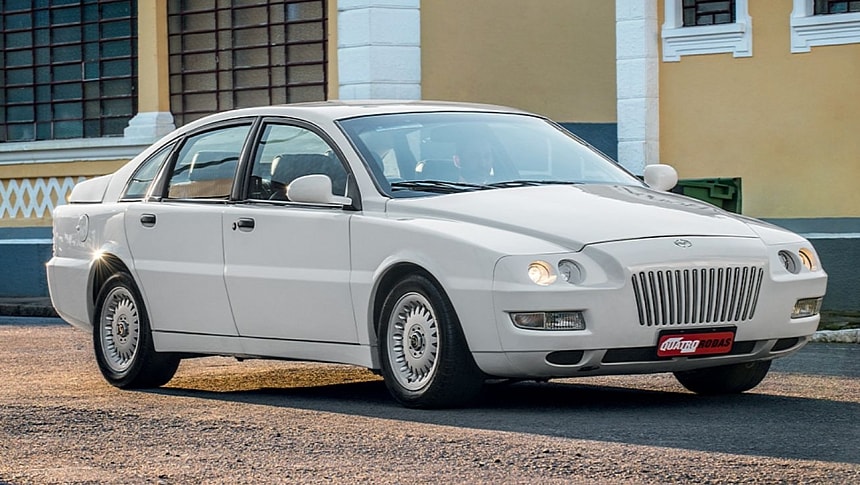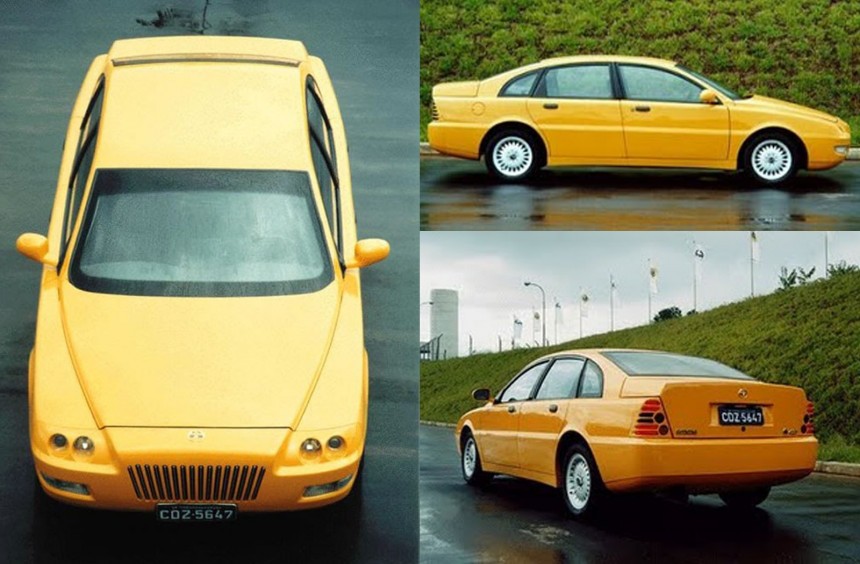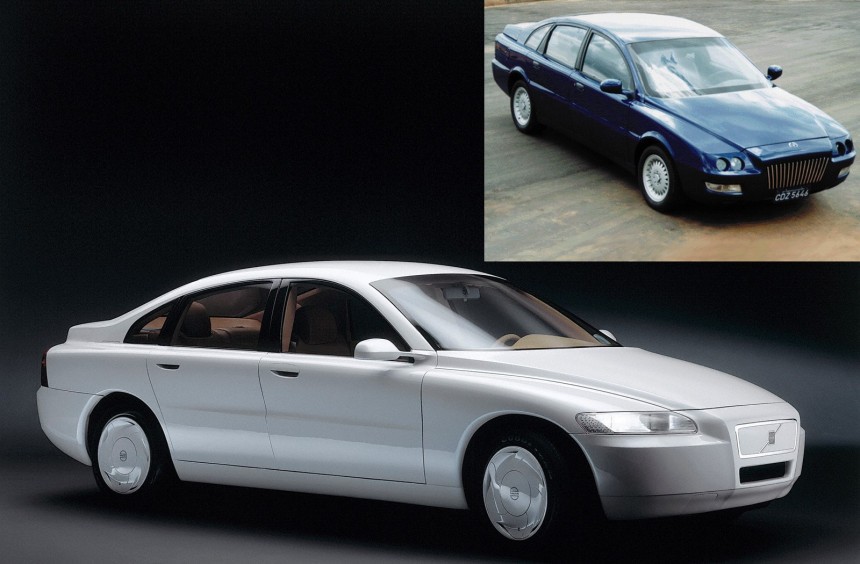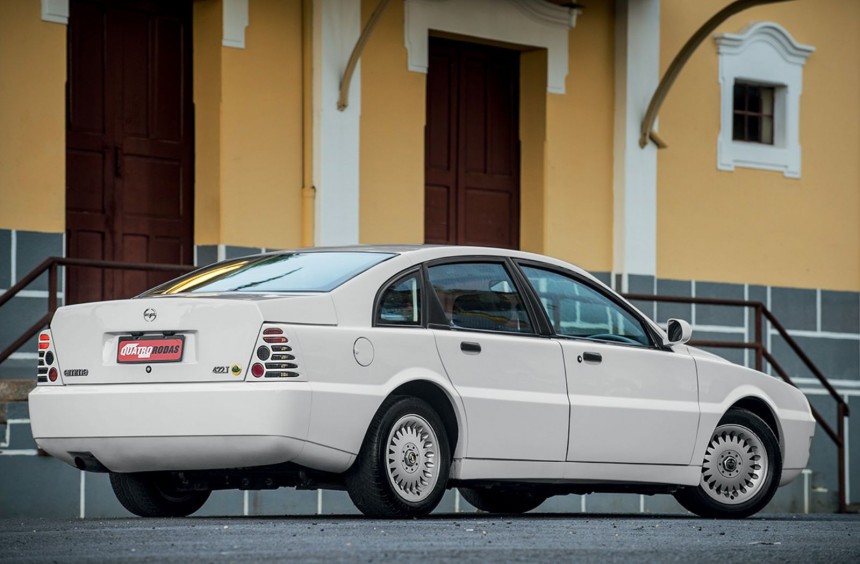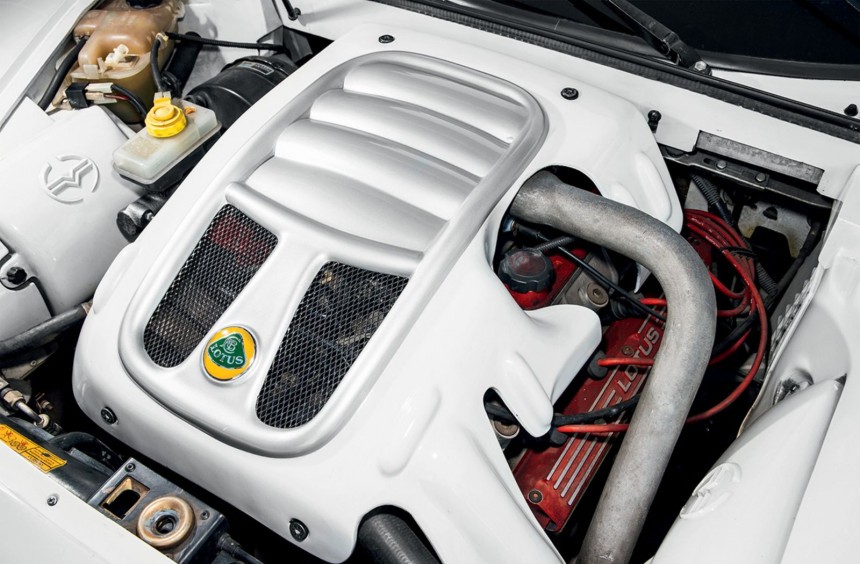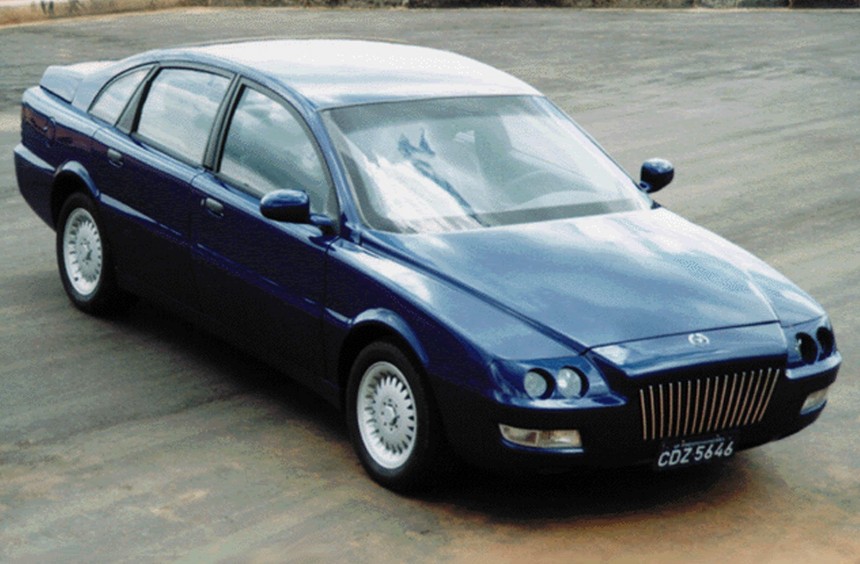Produced in Brazil nearly two decades ago, the 422T borrowed Lotus' lightweight philosophy as well as one of the S4 Esprit's engines. It aimed to challenge heavyweights like the BMW M5 or Mercedes E55 AMG, but it ended up being knocked out before stepping inside the ring.
Although it was off to a tumultuous start, from a global economics point of view, the 1990s ended up being a glorious decade for high-performance vehicles.
Apart from iconic supercars, the 1990s gave us a multitude of high-performance sedans that are still fascinating today, like the E34 and E39 BMW M5s, the Mercedes-Benz E55 AMG, or the Porsche-built 500 E, the first six generations of the Mitsubishi Lancer Evolution, and the list can go on.
Traditionally a sports car manufacturer, Lotus stepped up to contribute to the development of two high-performance sedans during that decade.
The first was the Lotus Carlton, a ridiculously fast four-door based on the Opel Omega/Vauxhall Carlton, while the second was the obscure Emme 422T that we'll cover in this article.
The story of the 422T started in the mid-1990s when several Brazilian businesspeople laid the groundwork for a new company called Megastar Veículos.
With financial backing from Swiss conglomerate Concept Aktiengesellschaft, the new venture aimed to produce a series of scooters called Mirage and, more interestingly, a luxury sedan under the moniker Emme.
Assembled at a state-of-the-art plant in Pindamonhangaba, near Sao Paulo, the Emme sedan was offered in entry-level, mid-level, and range-topping high-performance guises, all based on Lotus' lightweight philosophy.
When it unveiled the model at the 1997 Sao Paulo Motor Show in high-performance 422T guise, Megastar reps stated that 87% of the components used to build it were manufactured in Brazil.
Moreover, to shed as much weight as possible, the body panels were fabricated from a composite plastic named Vextrim - an automotive industry first.
Allegedly lighter yet harder than steel, the fully recyclable, rust-proof composite theoretically had bullet-resistant capabilities, which came in handy in some parts of Brazil.
That being said, the Emme was far from a gorgeous car. But apart from its questionable styling, the issue that immediately made it controversial was its evident resemblance to the 1992 Volvo ECC concept car (and subsequent S80 production model).
Surprisingly, Volvo had nothing to do with the Brazilian sedan, and Megastar - who denied drawing inspiration from the ECC - didn't acquire a license for the design from the Swedish manufacturer.
Lotus became a successful sports car manufacturer with numerous motorsport titles by following co-founder Colin Chapman's simple yet brilliant philosophy: "Simplify, then add lightness."
While the Emme T422 (also called Emme Lotus 442T) was simple, lacking unnecessarily heavy things like ABS or airbags, its galvanized steel chassis and the multitude of outdated off-the-shelf parts used in its construction made the sedan anything but lightweight.
Despite its presumably innovative Vextrim body, the T422 weighed nearly 3,527 pounds (1,600 kg), close to the far more advanced, V8-powered German performance sedans it aimed to compete with.
Though it lacked Lotus lightness, the Brazilian sedan received a Lotus powerplant.
For the 422T, the unit used was a 900 Series Type 910S linked to a Borg Warner five-speed gearbox similar to the one used in the SN95 Mustang V8.
A 2.2-liter DOHC turbocharged straight-four, the engine was rated at 264 hp (up to 280 hp for short intervals) and 271 lb-ft (367 Nm) of torque.
The Type 910S had been used in the Esprint since the late 1980s, but Lotus decided to replace it with its new V8 in 1996. Therefore, several of the leftover engines were sold to Megastar, who was allowed to use the Lotus badge on the trunk lid of their performance model.
Despite being a legendary engine in the lightweight Esprit, in the sensibly heavier Brazilian sedan, it led to a plebian power-to-weight ratio that was nowhere near what the V8-powered M3 or E55 AMG could achieve.
The company claimed 5-second 0 to 62 mph (0-100 kph) acceleration and a 168-mph (270-kph) top speed, but, as you would expect, those figures were never confirmed by an independent test.
Megastar had high hopes for the T422, which entered production a few weeks after its public debut. The company planned to sell an upgraded version in the US and Europe, where a prototype was tested on the Milan-Monte Carlo route.
But, after the new owners got their hands on their brand-new, Brazil-built, high-performance sedan, they discovered many nagging built-quality issues such as cheap materials or huge panel gaps.
That, combined with its questionable styling, lack of safety features, and unjustifiably steep price tag (close to BMW M5 territory), meant that orders quickly dried up.
Things got so bad that the whole project - allegedly backed up by a $162-million investment - was canceled in 1999, and Megastar was forced to file for bankruptcy.
These days, information about this controversial car is scarce, but according to multiple sources, up to 15 examples were built. Five of those were mid-range 420T models, while the rest were 422Ts.
Although it showed a lot of promise on paper, the Emme L422 was one of Brazil's most epic failures and today, it holds the title of the weridest car to ever don Lotus badges.
You can see the Emme Lotus in action on the streets of Brazil in the YouTube video below by Renato Bellote, but keep in mind that he speaks Portuguese, and English subtitles are unavailable.
Apart from iconic supercars, the 1990s gave us a multitude of high-performance sedans that are still fascinating today, like the E34 and E39 BMW M5s, the Mercedes-Benz E55 AMG, or the Porsche-built 500 E, the first six generations of the Mitsubishi Lancer Evolution, and the list can go on.
Traditionally a sports car manufacturer, Lotus stepped up to contribute to the development of two high-performance sedans during that decade.
The first was the Lotus Carlton, a ridiculously fast four-door based on the Opel Omega/Vauxhall Carlton, while the second was the obscure Emme 422T that we'll cover in this article.
It all started with an ambitious plan
With financial backing from Swiss conglomerate Concept Aktiengesellschaft, the new venture aimed to produce a series of scooters called Mirage and, more interestingly, a luxury sedan under the moniker Emme.
Assembled at a state-of-the-art plant in Pindamonhangaba, near Sao Paulo, the Emme sedan was offered in entry-level, mid-level, and range-topping high-performance guises, all based on Lotus' lightweight philosophy.
A controversial design
Moreover, to shed as much weight as possible, the body panels were fabricated from a composite plastic named Vextrim - an automotive industry first.
Allegedly lighter yet harder than steel, the fully recyclable, rust-proof composite theoretically had bullet-resistant capabilities, which came in handy in some parts of Brazil.
That being said, the Emme was far from a gorgeous car. But apart from its questionable styling, the issue that immediately made it controversial was its evident resemblance to the 1992 Volvo ECC concept car (and subsequent S80 production model).
Surprisingly, Volvo had nothing to do with the Brazilian sedan, and Megastar - who denied drawing inspiration from the ECC - didn't acquire a license for the design from the Swedish manufacturer.
Forgetting to add lightness
While the Emme T422 (also called Emme Lotus 442T) was simple, lacking unnecessarily heavy things like ABS or airbags, its galvanized steel chassis and the multitude of outdated off-the-shelf parts used in its construction made the sedan anything but lightweight.
Despite its presumably innovative Vextrim body, the T422 weighed nearly 3,527 pounds (1,600 kg), close to the far more advanced, V8-powered German performance sedans it aimed to compete with.
Powered by an authentic Lotus inline-four
For the 422T, the unit used was a 900 Series Type 910S linked to a Borg Warner five-speed gearbox similar to the one used in the SN95 Mustang V8.
A 2.2-liter DOHC turbocharged straight-four, the engine was rated at 264 hp (up to 280 hp for short intervals) and 271 lb-ft (367 Nm) of torque.
The Type 910S had been used in the Esprint since the late 1980s, but Lotus decided to replace it with its new V8 in 1996. Therefore, several of the leftover engines were sold to Megastar, who was allowed to use the Lotus badge on the trunk lid of their performance model.
Despite being a legendary engine in the lightweight Esprit, in the sensibly heavier Brazilian sedan, it led to a plebian power-to-weight ratio that was nowhere near what the V8-powered M3 or E55 AMG could achieve.
The company claimed 5-second 0 to 62 mph (0-100 kph) acceleration and a 168-mph (270-kph) top speed, but, as you would expect, those figures were never confirmed by an independent test.
An epic failure
But, after the new owners got their hands on their brand-new, Brazil-built, high-performance sedan, they discovered many nagging built-quality issues such as cheap materials or huge panel gaps.
That, combined with its questionable styling, lack of safety features, and unjustifiably steep price tag (close to BMW M5 territory), meant that orders quickly dried up.
Things got so bad that the whole project - allegedly backed up by a $162-million investment - was canceled in 1999, and Megastar was forced to file for bankruptcy.
These days, information about this controversial car is scarce, but according to multiple sources, up to 15 examples were built. Five of those were mid-range 420T models, while the rest were 422Ts.
Although it showed a lot of promise on paper, the Emme L422 was one of Brazil's most epic failures and today, it holds the title of the weridest car to ever don Lotus badges.
You can see the Emme Lotus in action on the streets of Brazil in the YouTube video below by Renato Bellote, but keep in mind that he speaks Portuguese, and English subtitles are unavailable.
